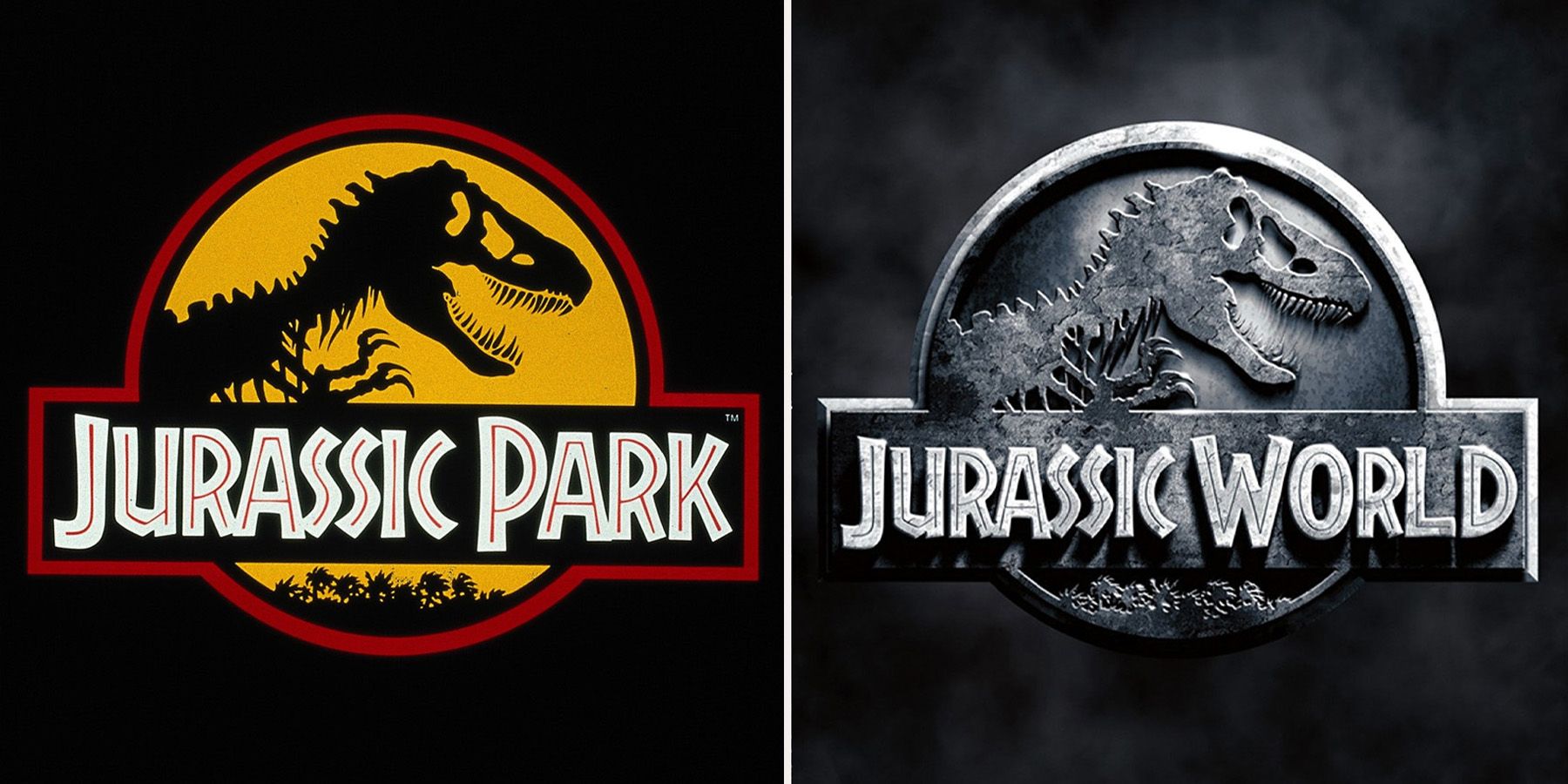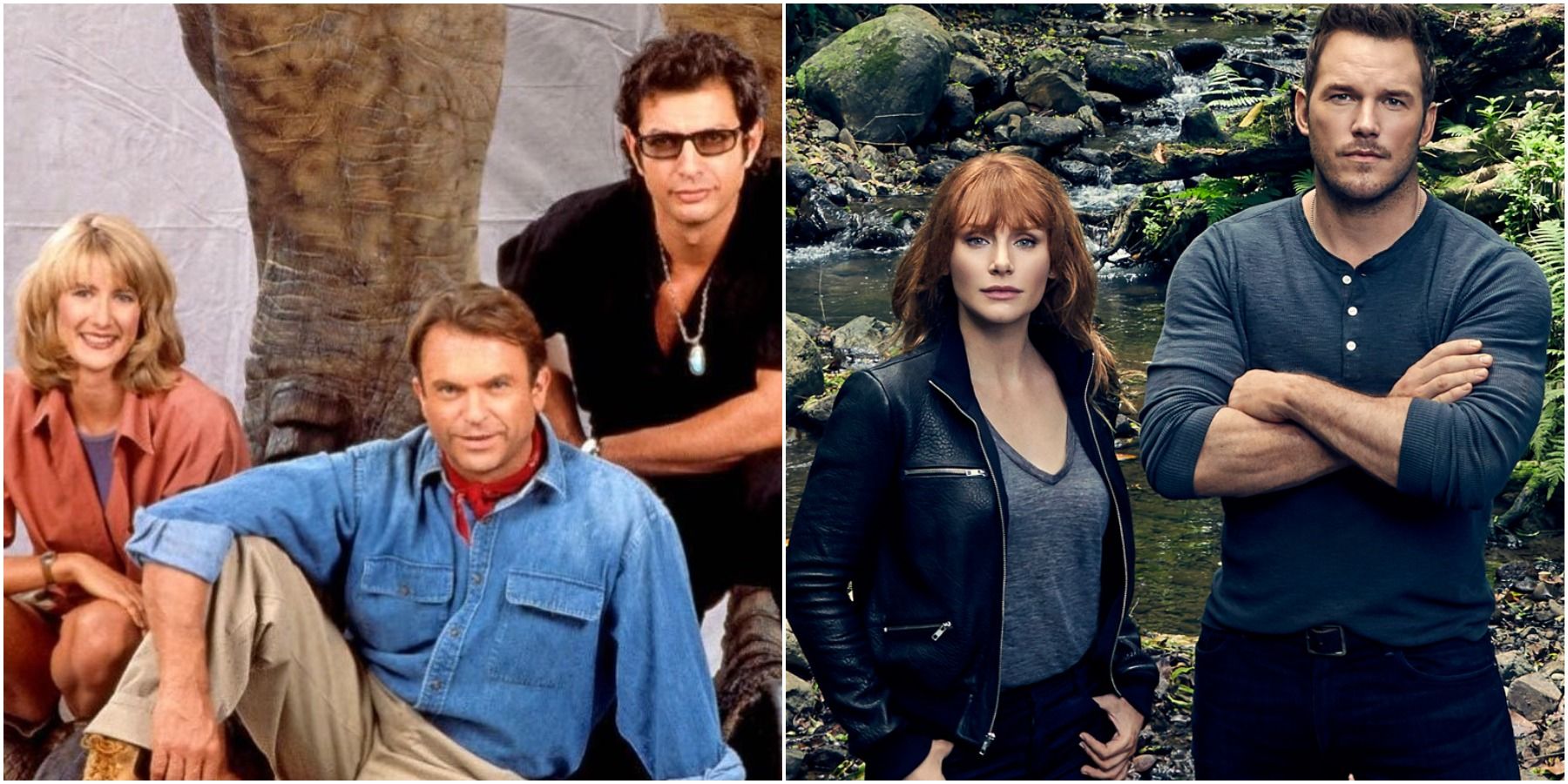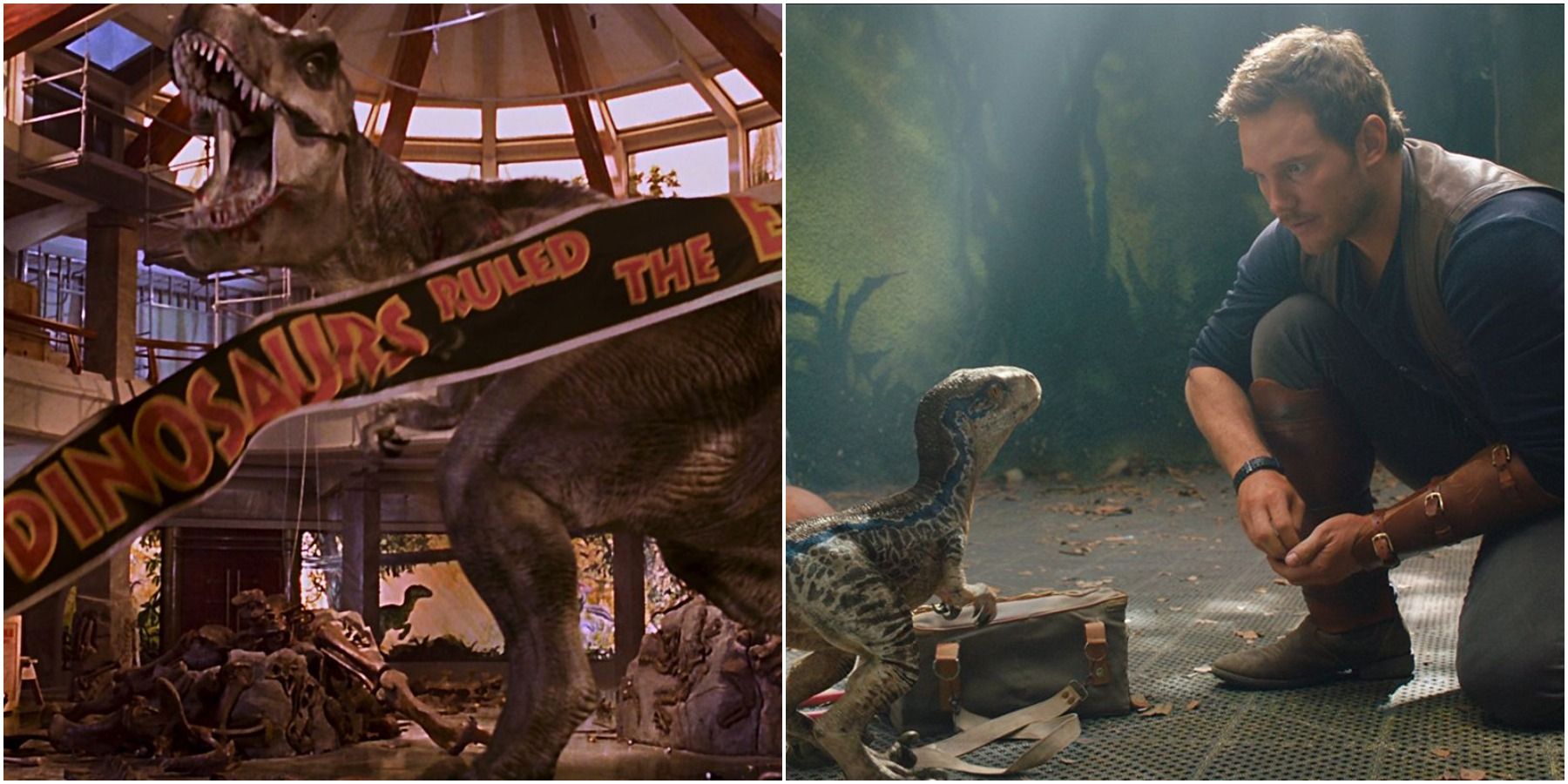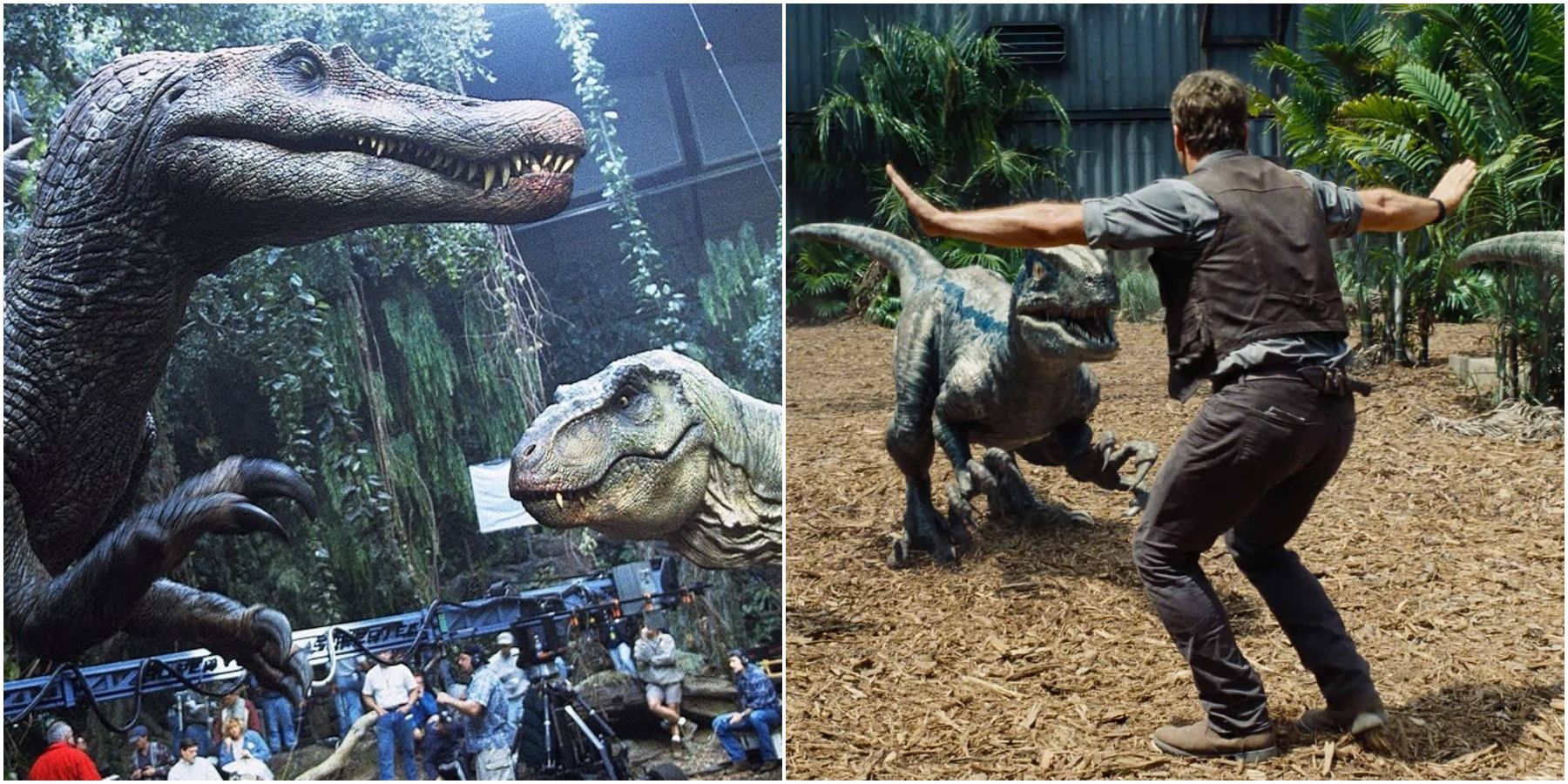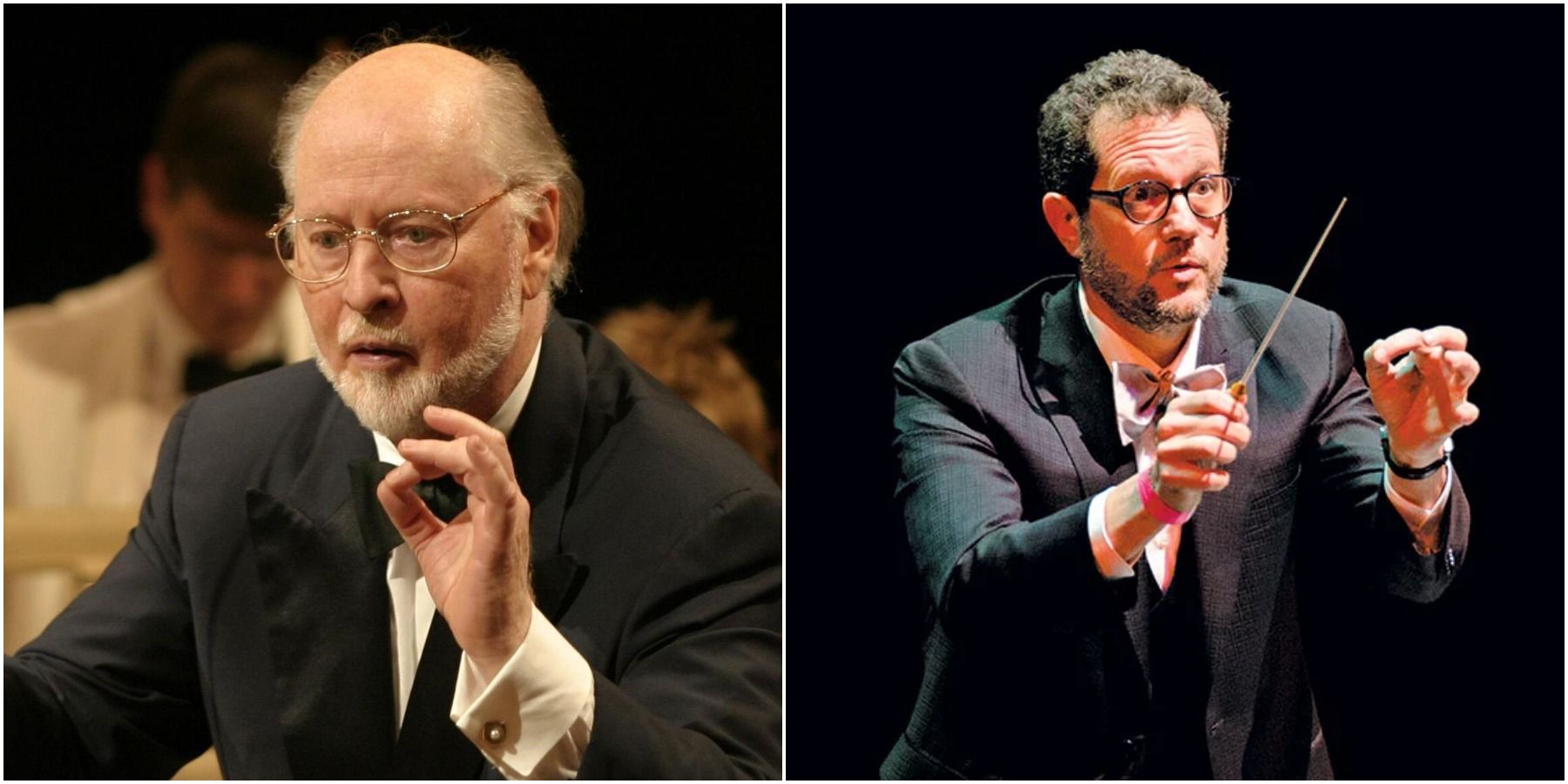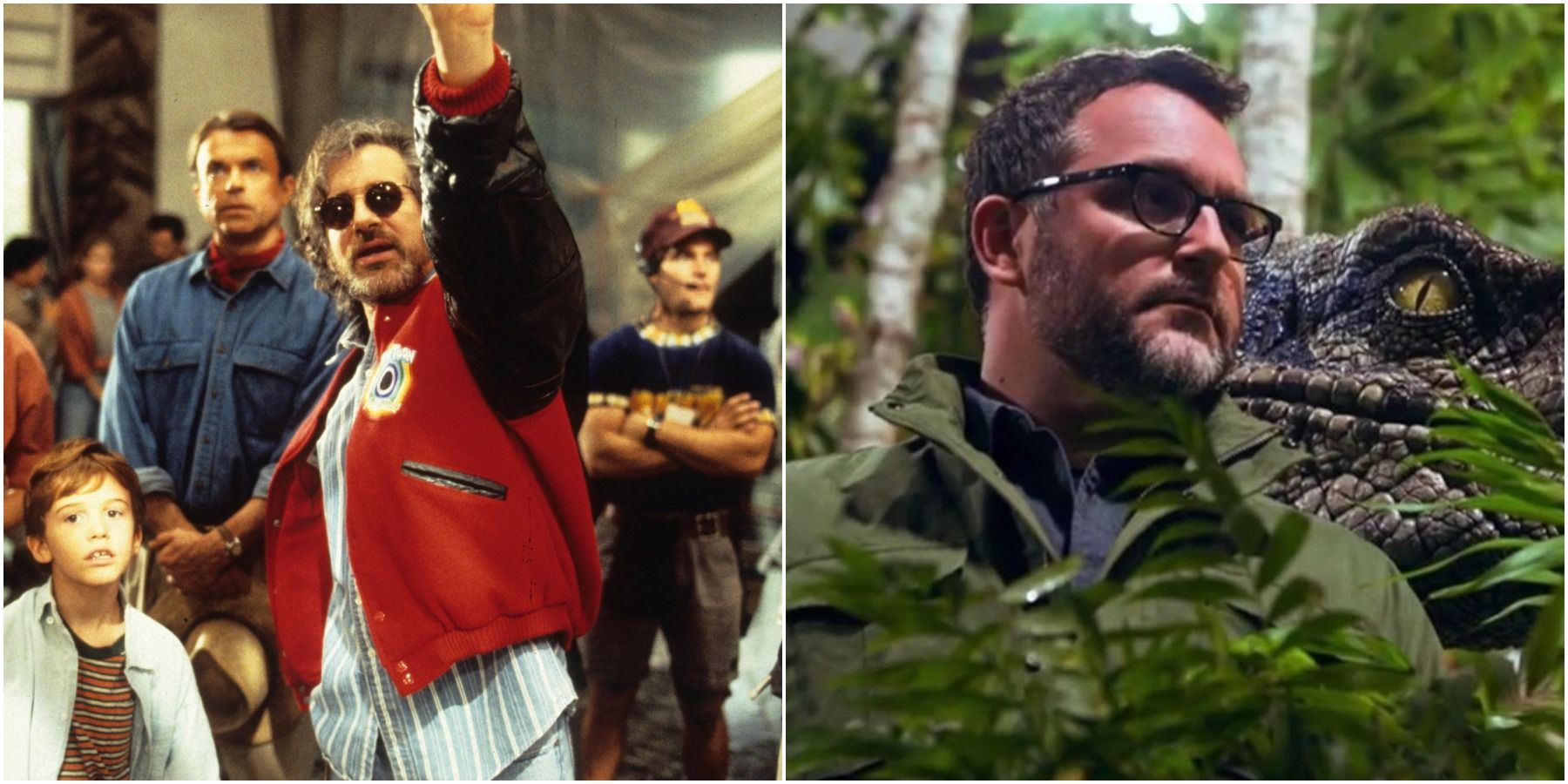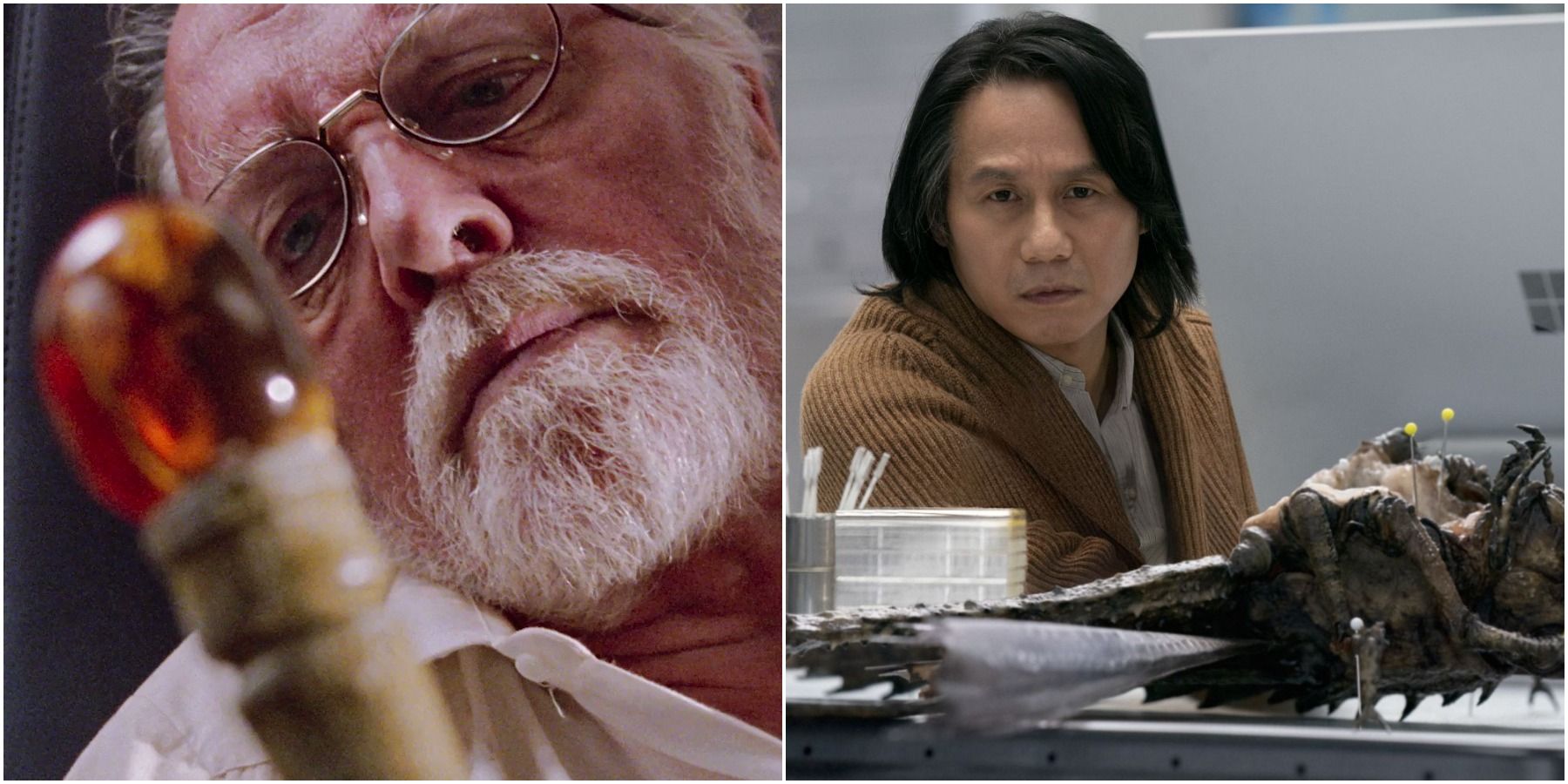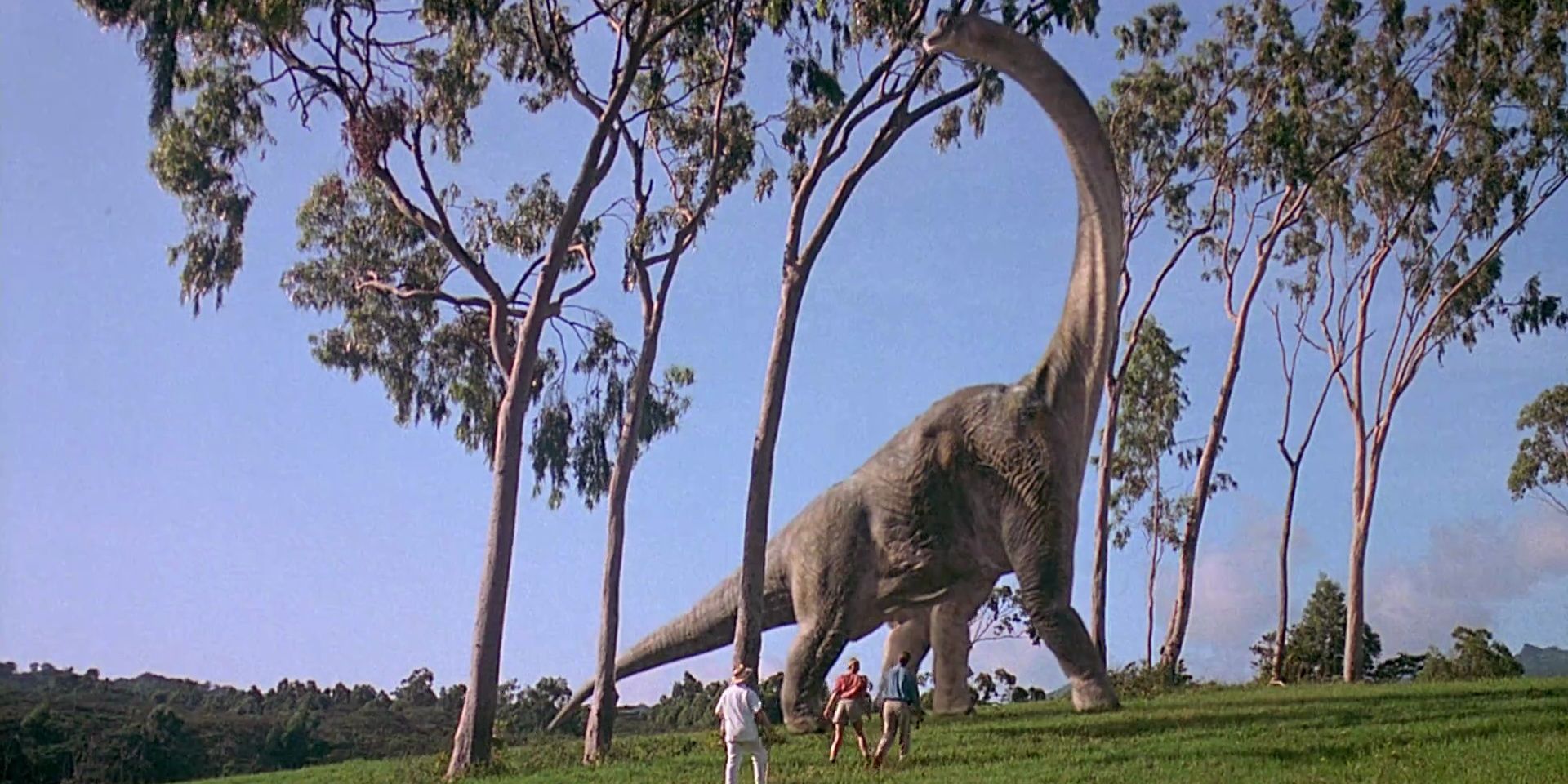After what seems like 65 million years of waiting, the long-running Jurassic movie saga has come to an end. As with any franchise conclusion, many audiences are now reflecting on the thrills and chills that came before. In this case, fans ponder which branch is better.
This series unfolds over two eras. The first three bear the original Jurassic Park title while the second trio of films rebrand themselves as Jurassic World. All of them have admirable qualities, but certain elements are simply stronger than others. A fundamental law of nature is survival of the fittest. With that in mind, which of these dino-romps will come out on top?
7 The Heroes: Jurassic Park
Some might dismiss creature features as effects shows, but the characters are just as important as the monsters onscreen. Author Michael Crichton knew that, which is why he created an intelligent trio of protagonists to head the tale. Alan Grant and Ellie Sattler are archeologists who have long studied the behaviors and tools of these prehistoric animals. Ian Malcolm – an expert in chaos theory – understands how little control mankind has over the powers that be. Thus, he stresses the caution of reckless affronts to nature. These three are vital to helping the audience learn the gravity of this undertaking. Such knowledge also makes it easy to identify with them over the typical horror protagonist, especially as their own perspective grows and changes through their harrowing experiences. Finally, the charismatic actors – Sam Neill, Laura Dern, and Jeff Goldblum – convey all of this with subtlety and grace.
Jurassic World has two figures more integral to the park: raptor trainer Owen Grady and administrator Claire Dearing. They helped build this place and raise its inhabitants. Thus, they have a more personal investment, reflected in their greater agency. They actively dive into the adventure and take the initiative in determining the dinosaurs' fate. That passion may sound corny, but it's sold effectively by Chris Pratt and Bryce Dallas Howard. It also means they sometimes approach conflict from an emotional perspective instead of an intellectual one, making the movies seem less intelligent as a result.
Thankfully, their credibility gets a boost by bringing back the old cast in the final entry. Yeah, it's a cheap move that reeks of fan service, but it lends more gravitas to the affair and makes the series feel more complete.
6 An Overarching Narrative: Jurassic World
The Jurassic Park movies are indicative of the fact that the filmmakers made things up as they went. The first film, like the first book, serves as a standalone story. It introduces a novel concept, crafts a narrative around that, and closes the book. The second entry opens that book and strains believability in doing so, yet it still offers a direct and admirable follow-up to the original's pivotal events. The third film makes no such attempt, acting as an isolated adventure about dumb people stranded on the island. It's basically a B-movie with a blockbuster budget, contributing nothing beyond that.
In contrast, Jurassic World is more organic in its long-form storytelling. The creators envisioned it as a trilogy from the start. Each entry feeds directly into the next. The events within feel more significant because of that, carrying weight beyond surface-level thrills. What's more is that changing the status quo lets all three films feel different, thereby fending off the staleness that a franchise naturally has after so many entries.
5 Special Effects: Jurassic Park
The classic Jurassic Park was a tent pole of visual effects. Its pioneering use of CGI rendered dinosaurs with a fluidity never seen before. While this computer wizardry is indeed impressive, one shouldn't discount the animatronics by the late great Stan Winston. The detail and movement of these puppets lend tangibility to these animals which CGI simply can't match. Thanks to clever camera tricks and atmospheric lighting, however, these two branches work seamlessly in tandem throughout the first three films to create living, breathing dinosaurs.
Jurassic World never quite achieves the same believability. Most of the creatures here are CGI. Though they're largely rendered well, some shots don't look up to snuff. It's especially noticeable during close-ups and in broad daylight. The animatronics are still present, but they're not nearly as prominent. Thus, these animals lack the weight of those that came before. Sometimes, it's better to have something in front of the camera.
4 Music: Jurassic Park
This is one area where it's tough to compete. John Williams is among the most revered film composers of all time, and his score for Jurassic Park is one of his best. Everyone knows the upbeat theme. However, he also crafts dynamic and memorable orchestral tracks to accompany the rest of the film. In the same way, he takes the score in a darker direction for The Lost World, echoing a foreboding jungle peril that still sounds cut from the same musical cloth as before. Sadly, Williams didn't score the third film, with Don Davis taking over. Although his take isn't as iconic, he still pumps the flick full of adrenaline and mirrors the earlier style well.
Speaking of mirroring, Michael Giacchino scores all three Jurassic World movies. Unfortunately, the music in the modern trilogy is rarely memorable. When not recycling familiar beats, the films mostly use forgettable string tunes. Ultimately, these scores go in one ear and out the other.
3 Direction: Jurassic Park
Here's another area where the comparison is almost unfair. Acclaimed director Steven Spielberg helms the first two Jurassic Park films, and his talent is on full display. Every shot has a purpose, and he constantly finds creative, picturesque ways to portray what could have been bog-standard scenes. His prowess makes the dialogue and set pieces equally interesting to watch.
Joe Johnston is no slouch, either. Jurassic Park 3 has a down-and-dirty atmosphere, which is apparent in its multitude of chase scenes. They're rife with in-your-face rapidity and chaos (pun intended). The close calls have rarely felt closer.
Writer-director Colin Trevorrow seems much tamer in Jurassic World. He routinely employs slow camera movements and polished blocking. This works for landscapes and moments of quiet suspense, but it robs some energy from the bombastic battles and chases. J.A. Bayona's horror background gives his style a bit more identity, adding an intimately fearful flair to the second entry, Fallen Kingdom. Unfortunately, he only sticks around for that single movie. The preceding and succeeding films come courtesy of Trevorrow. This is why the directing in the original trilogy is more impactful on average.
2 Themes: Jurassic World
What truly elevates Jurassic Park above a mundane monster flick are its messages. The first film possesses a potent theme about Man interfering with nature, expertly delivering that theme with empathetic characters, careful contemplation, and hard-hitting carnage. Sadly, its sequels don't do much beyond that. The Lost World attempts to reframe the premise as an environmental issue clashing with corporate greed, but it fails to develop this idea to its full potential. This shortcoming is further undermined by the third movie. Once again, it has little to say about its concepts.
Jurassic World, on the other hand, expands the first film's thematic foundation and asks a host of new questions. When the public inevitably sees prehistoric creatures like every other zoo animal, how would shareholders react? How far would they go in their unethical search for greater spectacle? If these animals face a new extinction, should mankind aid them? How would the world change if dinosaurs roamed free once again?
Granted, the handling of these issues is not always the smoothest or the deepest; it's downright cartoonish at points.
Nevertheless, these films give audiences pause for thought, as the debate between intervention and a more hands-off mindset flows strongly through each one. This is what Crichton always intended with his work.
What he might not have intended was the shift in outlook. The original Jurassic Park has a very cynical view of the subject, stressing that humans can't possibly deal with the power they've unleashed. Dinosaurs will run right over them and dominate the planet. It fuels the casualties throughout the original trilogy and the vitriol aimed at those responsible.
By contrast, Jurassic World poses a more optimistic outlook. Dinosaurs should have stayed in the past, but they are now living creatures like any other animal. Instead of eliminating them, humans can learn to coexist with them as just another branch of wildlife. This is an unexpected twist on the formula, but not an unwelcome one. Like the dinosaurs themselves, it shows a thematic evolution beyond what the creator intended.
1 Overall: Jurassic Park
Again, each branch of this franchise is worth watching. Both have their share of glaring weaknesses, but these are vastly outweighed by the undeniable strengths. They explore the timeless concept of bringing dinosaurs back to life and provide exhilarating adventures to boot.
Ultimately, though, Jurassic Park emerges as the more inspired of the two. Jurassic World may have more to say in the long run thanks to a more cohesive vision, but the execution simply can't match the highs of the original classic or its sequel.

